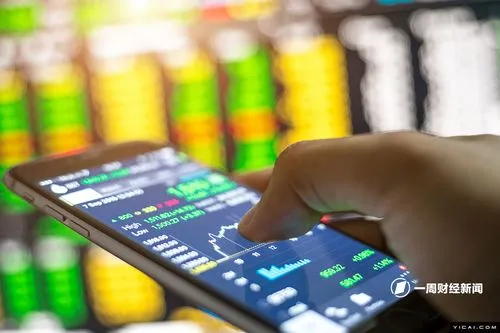Silver ETF Flows: A Bullish Sign for the Shiny Metal?
Meta Description: Dive into the world of silver ETFs with this comprehensive analysis of recent iShares Silver Trust holdings changes. Learn about potential market implications, investor sentiment, and the factors driving silver prices.
Get ready to shine a light on the silver market! The recent surge in holdings of the iShares Silver Trust, the world's largest silver ETF, has sent ripples through the investment community. This dramatic increase, totaling a hefty 65.27 tons as of September 10th, has sparked discussions about what it signifies for the future of silver prices. As a seasoned financial analyst, I'm here to break down the details, explore the potential implications, and offer insights into the complex world of silver investing.
What Drives Silver ETF Flows?
Understanding the drivers behind ETF flows is key to deciphering the market's message. Think of it like this: ETFs are like a window into the collective investment sentiment of a large group of investors. When we see a significant change in ETF holdings, it can reveal valuable information about the market's mood. Let's dive deeper into the key factors influencing silver ETF flows:
1. Investor Sentiment: When investors are bullish on a commodity like silver, we often see an increase in ETF inflows. This is because ETFs offer a convenient and accessible way to gain exposure to a specific asset class. A surge in ETF holdings can indicate that investors believe silver prices are likely to rise in the future.
2. Economic Outlook: Global economic conditions play a crucial role in driving silver demand. For instance, when economic growth is strong, industrial demand for silver often rises, leading to higher prices. Conversely, during periods of economic uncertainty, investors may seek refuge in safe-haven assets like silver, further boosting demand.
3. Inflation: In inflationary environments, silver can act as a hedge against rising prices. As the purchasing power of money erodes, investors may turn to commodities like silver, which tend to retain their value better. This can lead to increased demand and higher prices.
4. Central Bank Policies: Monetary policy decisions by central banks can also impact silver prices. For example, if interest rates are lowered, it can make it cheaper for investors to borrow money, potentially leading to increased investment in commodities like silver.
What Does the Recent iShares Silver Trust Increase Mean?
The 65.27-ton increase in the iShares Silver Trust's holdings is a significant move. It suggests that investors are becoming more optimistic about silver's prospects. Several factors could be contributing to this bullish sentiment:
- Inflationary pressures: With inflation remaining stubbornly high in many parts of the world, investors may be seeking a safe-haven asset like silver to protect their purchasing power.
- Geopolitical tensions: The ongoing conflict in Ukraine has created uncertainty and volatility in global markets. This has led some investors to seek refuge in hard assets like silver.
- Industrial demand: Silver is used in a wide range of industrial applications, from solar panels to electronics. As the global economy continues to grow, demand for silver in these sectors is expected to remain strong.
The Future of Silver Prices
Predicting future silver prices is a complex task, but the recent increase in ETF holdings suggests that investors are becoming more bullish. However, several factors could impact silver prices in the coming months:
- Economic growth: If economic growth slows down, it could dampen demand for silver and lead to lower prices.
- Interest rate hikes: Central banks around the world are raising interest rates to combat inflation. This could make it more expensive for investors to borrow money and invest in silver.
- Supply and demand dynamics: The supply and demand dynamics for silver can also impact prices. If demand outpaces supply, prices are likely to rise. However, if supply exceeds demand, prices could fall.
Conclusion:
The recent surge in holdings of the iShares Silver Trust is a significant event that deserves attention. It suggests that investors are becoming more optimistic about silver's prospects, driven by factors such as inflation, geopolitical uncertainty, and strong industrial demand. However, it's important to remember that the future of silver prices is uncertain. Investors should carefully consider their own investment goals and risk tolerance before making any decisions.
FAQ:
Q: What is an ETF?
A: An ETF (Exchange-Traded Fund) is a type of investment fund that tracks the performance of a specific asset class, like silver, gold, or an index. ETFs trade on stock exchanges, making them easy to buy and sell like stocks.
Q: Why is silver considered a safe-haven asset?
A: Silver is considered a safe-haven asset because it tends to hold its value well during times of economic uncertainty or market turmoil. Historically, silver prices have risen during periods of inflation and geopolitical instability.
Q: What are the potential risks of investing in silver?
A: Like any investment, investing in silver carries risks. Silver prices can be volatile and be influenced by factors such as economic conditions, government policies, industrial demand, and supply and demand dynamics. Investors should carefully research and understand the risks before investing in silver.
Q: What are some other factors that could impact silver prices?
**A: ** In addition to the factors mentioned above, other factors that could impact silver prices include technological advancements, environmental regulations, and the availability of substitutes.
Q: Is it a good time to invest in silver?
A: Whether or not it's a good time to invest in silver depends on your individual investment goals and risk tolerance. It's important to conduct thorough research and consult with a financial advisor to determine the best investment strategy for your situation.



